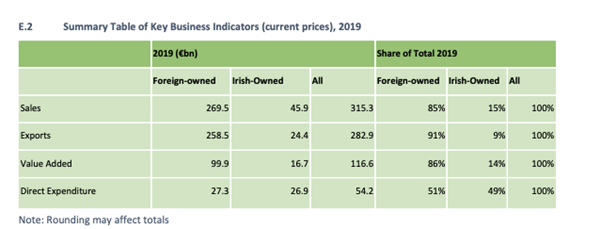The greatest challenge for the Irish agri sector is the representation and communication of its unique economic and social impact in the Irish economy, in the face of domestic political and economic ignorance threatening to undermine the right to produce.
A quick perusal of the background noise over Christmas and the New Year indicates that the Irish agricultural sector is not at all part of the Irish economy conversation, but very definitely is a part of the Irish climate action narrative.
In essence, the agri sector is now characterised in mainstream media in terms of opinion on its carbon emissions or impact on water quality, with no mention of the 260,000 jobs supported across the Irish economy.
Meanwhile, the increased global demand for Irish grass-based meat and dairy products, reflecting an understanding by global consumers that Irish produce is among the lowest carbon emitting in the world, is either ignored or dismissed as a ‘greenwashing’ stunt.
Reasons for narrow-mindedness about agriculture
This one dimensional view of a sector that supports one job in eight in the economy derives from:
- The onslaught from the environmental lobby over the last two years, and in particular the prejudice that suggests that Irish agricultural output must be contained and even reduced;
- An Irish economy discourse that both ignores agriculture’s contribution and continues to willfully or otherwise over estimate the impact of foreign direct investment (FDI);
- Perhaps most importantly, a reflection of the messaging / communication tone of Irish agriculture itself.
How can we change this unhealthy mix of ignorance and prejudice?
Changing the narrative
With regard to the environmental lobby and the mainstream media (some of which still don’t currently have agriculture correspondents), my suggestion would be (as per 1950s US democratic candidate Adlai Stevenson) that the agri sector should, as they say, reach out and offer conciliation on the basis that “if they stop telling lies about us, we will stop telling the truth about them”.
We have been here before, in 2004 when the agri sector was dismissed as ‘sunset’ and as the table below indicates, the reality of the net contribution of the multinational sector is that the core contribution of the sector is a €27 billion annual expenditure in the Irish economy, and not the €280 billion of exports that are included in the national accounts.

Despite the reality set out above, the core prejudice against Irish agriculture continues – Irish agriculture’s ‘best in class’ figures for Irish economy spend are ignored in favour of a gross domestic product (GDP) figure that contains €160-180 billion of multinational profits / ‘pass-through’ money.
The continuing concern, as in the early 2000s, is that the underappreciated agri sector will be given away, which came very close in the frenetic approach to World Trade Organisation (WTO) discussions in Doha circa 2008.
What we can see from government actions on the single corporation tax issue is that when a sector is valued, it is well defended.
The Irish economy, which was really struggling from 2008 to 2012, dodged a bullet because Irish agriculture demonstrated huge economic capability and resilience despite being dismissed and underappreciated.
Positive communication for agriculture
Agriculture needs to better and more regularly communicate, not only its resilience, but its intrinsic economic value and its successes.
The Irish agri sector has been able to respond positively to fundamental market / supply questions and adapt through flexibility and resilience over the last 30 years or more.
This is all the more laudable given that 90% of the consumers of Irish food and drinks are in 130 countries across the globe.
There is huge strength in the Irish economy expenditure and market diversification accomplishments of the Irish agri-food sector.
Agri sector spend
Dairy sector expenditure on raw materials and services in the Irish economy has increased from just over €1 billion to almost €4 billion since quotas were abolished.
According to the Department of Enterprise, Trade and Employment (DETE) Annual Survey of Irish Economy Expenditure, the pharmaceutical sector, which exports in excess of €60 billion of product from Ireland, is the largest of the multinational sectors in Irish economy expenditure terms, but spends just €3.8 billion annually.
As I have said previously, the cumulative spend of the whole agri food and drink sector is almost €15 billion.
The beef sector transformed to a largely fresh beef to UK / EU consumer market from the early 2000s, from selling 60% of its output as frozen beef very much dependent on the support of EU export subsidies, in the 80s and 90s.
So unlike a lot of industry in Ireland, the Irish agricultural sector has managed to adapt to volatility in markets and policies, both globally and locally.
Irish agriculture will always have discussion, negotiation and loud noise about prices and incomes in a volatile world, but this cannot be the only communication from the sector.
The messaging must not always be negative because all this does is support the suppression of output canard.
